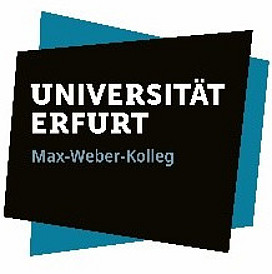Veronika Kolomaznik
Transformation und resonance of the enlivened Phallos. Metamorphosis and significance of a powerful ancient motif (working title)
In the rich imagery of the ancient cultures in the Mediterranean the Phallos – i.e. the detached male member – can be found in various visual media. The center of this project are image-bearing objects such as ceramics, glyptics, relief, sculpture, amulets ect. Additionally, written sources, contexts of origin, function, and visibility can provide useful information about the transformations and meanings of the phallic motif.
As a body part, its concise shape is easy to produce and to recognize. The catchy motif can evoke a series of associations and emotions in the viewer. In Antiquity the phallos often appears as a living and interacting being. This process of animation or Verlebendigung (T. Hölscher) is most clearly visible in the eye on the Phallos’ head. In further variations, the Phallos is equipped with wings or a zoomorphic body. In Greek and Roman times, this phenomenon reaches beyond individual pictorial motifs: Certain images were understood as “alive” and in specific contexts objects such as the Phallos were powerful and enabled communication with the divine to guarantee prosperity of life.
The enlivened Phallos – as an object and image – is associated with various social-religious ideas and practices. From Archaic times onward Phalloi were part of institutionalized cult festivals of the Polis community such as the fertility festivals for Dionysus and Demeter. Ecstasy, transgression, collective escape from the norm, and liberating laughter played a major role during the social-religious events and must also be included in the analysis of these obscene images. In the spectrum of religious experiences and rituals, phallic objects – for protection and to bring good luck – also appear in a “private” ambience. In connection with domestic cults and superstitions, Phalloi were worn on the body or placed in liminal spaces such as doors and furnaces.
In Greco-Roman times, the Phallos proves to be a meaningful and powerful motif. The images and objects are part of a diverse network of relationships, which is the focus of my project. The object-image relationships of the enlivened Phallos are multifunctional. He is a fellow comast, cult recipient and lucky charm. A Sinnbild of a peaceful joie de vivre, prosperity and fertility. By being integrated into socio-religious rituals, the phallic objects enable a relationship to the divine. By analysing the image-relationship of the Phallos (its roles and connections within the imagery), I aim to approach the meanings and functions of the relationship between human, Phallos, and the divine.
Curriculum Vitae
- Seit 2021 Dokorantin an der IGS "Resonant Self-World Relations in Ancient and Modern Socio-Religious Practices"
- 2016 bis 2020 Masterstudium Klassische Archäologie an der Universität Wien, Titel der Masterarbeit: „Φαλῆς – Bakchos-Gefährte, Mitkomast, Nachtschwärmer... Zur Relevanz des Phallosvogels in der attischen Vasenmalerei“; Betreuerin: Univ.-Prof. Dr. M. Meyer
- 2010 bis 2016 Bachelorstudium Klassische Archäologie an der Universität Wien, Titel der Bachelorarbeiten: „Epiphanie und ekstatische Rituale“; Betreuer: Dr. habil. F. Blakolmer „Die Pantoffelgruppe. Warum Aphrodite denn Schlapfn hält“; Betreuerin: Univ.-Prof. Dr. M. Meyer
- 2018 bis 2020 Studienassistentin bei Univ.-Prof. Dr. M. Meyer; Betreuung der Archäologischen Sammlung des Instituts für Klassische Archäologie
- 2016 bis 2018 Tutorin der Vorlesung „Einführung in die griechische Archäologie“ an der Universität Wien
Dr. Elisabeth Begemann
Dr. Anna-Katharina Rieger
DoktorandInnenstellen für das Studienjahr 2023/24 ausgeschrieben! Frist verlängert (Ende April).
Infos zur Ausschreibung hier.
Internationale Graduiertenschule




